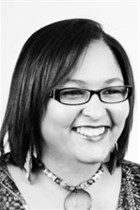Today, we are seeing a blurring of the once thick lines between paid media, owned media and earned media. As marketing and advertising professionals, we need to start thinking about these categories in a more integrated fashion, or risk being left behind by the trend.
When we talk about paid media, we are referring to paid placements such as banner ads, paid search, and advertorials. Owned media refers to the platforms that a brand runs itself and has complete control over - for example, websites, social media accounts, blogs, microsites, and so on.
Earned media is made up of organic and user controlled content such as independent editorial run by journalists and editors in the mainstream media and user generated content such as tweets, Facebook posts, user comments and reviews. Earned media can be influenced and directed somewhat through the social media and reputation management strategy, but it cannot be controlled.
In practice, the lines between these categories are getting blurred because they all coexist on the same digital platforms. For example, you can get paid placements in earned media channels, such as Facebook through promoted posts and carve out an owned media spot by setting up your own Facebook presence.
And it's becoming increasingly common for publishers to run advertorials that look like site content in every way, besides a discrete notice that they are sponsored content. Ads that look like editorial and editorial that looks like advertising, are becoming more and more common.
The implication for marketing and advertising professionals is that we need to start thinking about how these forms of media interact with each other in a more integrated manner. We should look at how each informs the buying decision rather than simply aiming to execute a global message across a large spectrum of channels.
As a first step, it means that marketers need to make more of an effort to coordinate functions such as SEO, digital advertising, PR, social media and managing corporate websites. These disciplines can no longer work in silos.
Secondly, it means focussing on the consumer's need for entertaining and informative content, rather than on the traditional marketing goals for each channel.
We may once have invested in banner ads for brand-building and customer acquisition. Now, we should perhaps be thinking of paid media as a means to amplify the impact of earned and owned media, rather than treating each media channel as a separate and totally disconnected effort.
Your goal should be an experience that feels natural to the user. All your content should be so complementary that users don't feel like advertising interrupts the flow of their experience.
They'll be willing to engage with, read, comment on, like, and share content because it feels like it belongs there.
The benefits of doing this right can be enormous. Here are a few tips about how to get the optimal mix of paid, earned and owned in your campaigns and strategies:
